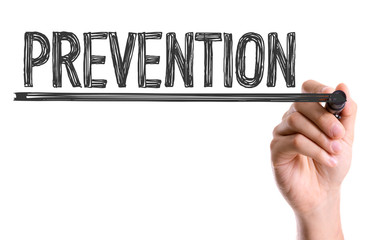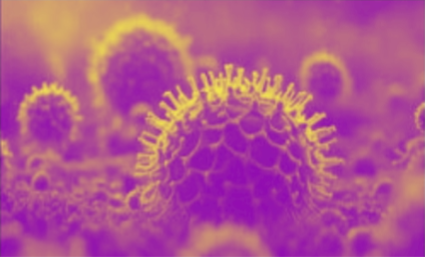The Human Metapneumovirus (HMPV) is a relatively lesser-known respiratory virus that has
quietly become a significant cause of respiratory infections worldwide. Despite its low profile,
HMPV is a pathogen of concern, especially for vulnerable populations like young children, the
elderly, and immunocompromised individuals. This article delves into the origins, symptoms,
transmission, diagnosis, treatment, and prevention strategies for HMPV, shedding light on this
silent threat.
What is HMPV?
Human Metapneumovirus (HMPV) was first discovered in 2001 by Dutch scientists but has
been circulating in human populations for decades. Belonging to the Paramyxoviridae family,
HMPV is closely related to the Respiratory Syncytial Virus (RSV) and parainfluenza viruses. It
primarily targets the respiratory system, causing a range of illnesses from mild upper respiratory
infections to severe lower respiratory tract diseases such as bronchiolitis and pneumonia.
Epidemiology
HMPV has a global presence and is active year-round, with seasonal peaks typically occurring
in late winter and spring. It is responsible for 5-15% of respiratory infections, making it a
significant contributor to hospitalizations, particularly in pediatric and geriatric populations.
Studies suggest that nearly all individuals are exposed to HMPV by the age of 5, with
reinfections occurring throughout life.
Symptoms of HMPV Infection
Symptoms can range from mild to severe, depending on the individual’s age, immune
status, and overall health. Common symptoms include:
- Mild Cases:
- Runny or congested nose
- Cough
- Fever
- Sore throat
- Fatigue
- Severe Cases:
- Difficulty breathing
- Wheezing
- Chest pain
- Cyanosis (bluish discoloration of the skin)
- High fever and chills
In severe cases, particularly in infants, the elderly, or those with underlying conditions, HMPV
can lead to bronchiolitis, pneumonia, and acute respiratory distress syndrome (ARDS).
How is HMPV Transmitted?
Spreads primarily through:
- Respiratory Droplets: When an infected person coughs, sneezes, or talks, tiny droplets
containing the virus are released into the air. - Direct Contact: Touching surfaces or objects contaminated with the virus and then touching
the nose, mouth, or eyes can result in infection. - Close Contact: Prolonged exposure to an infected person, such as in crowded spaces or
household settings, increases the risk of transmission.
The virus is highly contagious, with an incubation period of 3-6 days. Infected individuals are
most contagious during the early stages of the illness.
Who is Most at Risk?
While HMPV can infect individuals of all ages, certain groups are at higher risk of severe
disease:
- Infants and Young Children: Due to their immature immune systems.
- Elderly: Age-related immune decline makes them susceptible.
- Immunocompromised Individuals: Cancer patients, transplant recipients, or those with
HIV/AIDS. - People with Chronic Conditions: Such as asthma, chronic obstructive pulmonary disease
(COPD), or heart disease.
Diagnosis
Diagnosing can be challenging because its symptoms overlap with those of other
respiratory viruses, including influenza, RSV, and COVID-19. Common diagnostic methods
include:
- Polymerase Chain Reaction (PCR): The most sensitive and specific test for detecting
HMPV RNA in respiratory specimens. - Rapid Antigen Tests: Less sensitive but quicker.
- Serology: Detecting antibodies against HMPV, mainly for research purposes.
- Viral Culture: Rarely used due to its time-consuming nature.
Treatment Options
Currently, there are no specific antiviral drugs approved for this. Treatment centers around
managing symptoms and preventing any potential complications:
- Symptom Management:
- Over-the-counter pain relievers (e.g., acetaminophen or ibuprofen) for fever and body aches.
- Decongestants and saline nasal sprays for nasal congestion.
- Hydration to prevent dehydration.
- Severe Cases:
- Supplemental oxygen for respiratory distress.
- Mechanical ventilation in cases of severe respiratory failure.
- Hospitalization for high-risk patients.
- Investigational Treatments: Monoclonal antibodies and antiviral drugs are being studied but
are not yet widely available.
Prevention Strategies

Since no vaccine is currently available for this virus, preventive measures are crucial:
- Personal Hygiene:
- Frequent handwashing with soap and water for at least 20 seconds.
- Using alcohol-based hand sanitizers when soap is unavailable.
- Respiratory Etiquette:
- Covering mouth and nose with a tissue or elbow when coughing or sneezing.
- Proper disposal of used tissues.
- Avoid Close Contact:
- Maintaining distance from sick individuals.
- Avoiding crowded places during peak seasons.
- Surface Disinfection:
- Regular cleaning of frequently touched surfaces, such as doorknobs, phones, and
countertops.
- Protecting High-Risk Individuals:
- Limiting exposure to sick individuals.
- Ensuring good ventilation in indoor spaces.
Current Research and Developments
Ongoing research aims to better understand HMPV’s molecular biology, transmission dynamics,
and immune responses. Notable areas of focus include:
- Vaccine Development: Scientists are working on vaccines targeting HMPV, with promising
results in preclinical trials. - Antiviral Therapies: New drugs targeting the virus’s replication mechanisms are under
investigation. - Epidemiological Studies: Tracking Virus outbreaks to identify patterns and risk factors.
The Connection Between HMPV and Other Respiratory Viruses
HMPV often co-circulates with other respiratory viruses like RSV and influenza, leading to co-
infections. These can worsen the severity of the illness and complicate treatment.
Understanding these interactions is essential for developing effective management strategies.
Emerging Challenges with HMPV
Recent studies suggest that climate change and urbanization may influence HMPV’s
transmission dynamics, potentially leading to prolonged seasonal outbreaks. Additionally,
limited public health surveillance systems in many regions hinder the early detection and
management of HMPV infections, exacerbating its impact.
Why Awareness is Crucial?
Despite its impact, HMPV remains underrecognized by the general public and healthcare
providers. Raising awareness can lead to earlier diagnoses, better management, and increased
research funding to combat this virus.
The Human Metapneumovirus is a silent yet significant contributor to respiratory illnesses
worldwide. While it primarily affects vulnerable populations, its potential for severe disease
underscores the need for increased vigilance, research, and preventive measures. By adopting
simple hygiene practices and staying informed, we can collectively mitigate the impact of this
virus until vaccines and targeted therapies become available.
As research continues to uncover the mysteries of HMPV, a coordinated global effort will be
crucial in addressing its challenges and reducing its burden on public health systems.


